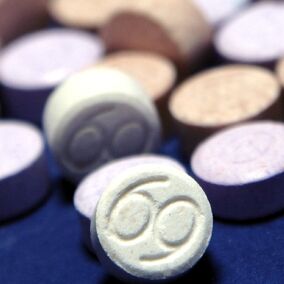
The HIV transmission rate amongst men in the US fell further in 2022, according to new data from the CDC. The number of new cases was down 12% in 2022 compared to 2018.
Among the groups showing the biggest drop was the youngest age group monitored (13-24 year olds). This category saw a 30% drop
There was also a significant drop amongst Black men, of 18%, and across the southern states generally, of 16%. It’s previously been noted that HIV disproportionately impacts Black communities and that there are more diagnoses each year in the southern US than in other areas.
How about we take this to the next level?
Subscribe to our newsletter for a refreshing cocktail (or mocktail) of LGBTQ+ entertainment and pop culture, served up with a side of eye-candy.
Less encouraging, those aged 25-65 showed no drop in new cases, and other parts of the US showed no decrease. However, because HIV remains such an issue in the South, its decrease brings the averages down across the US.
Looking deeper at the figures for gay and bisexual men only, in 2022, 39% of new cases were among Hispanic and Latino men. This group slightly overtakes the number of new cases in Black men.
Also, queer Hispanic and Latino men show no decrease in new HIV cases since 2018. Gay/bi Black men showed a 16% drop and White men showed a 20% drop.
Although the general drop in new HIV cases is welcomed, health experts remain frustrated that it is not falling quicker. The government previously set a goal of reducing new cases by 75% by 2025 and by at least 90% by 2030.
That looks unlikely to happen.
How does this compare to other countries?
In the UK, there was a 33% drop in new HIV cases between 2019 and 2021. Health experts there believe the country is on track to reduce transmission to near zero by 2030. Other parts of Europe are doing even better. Last year, Amsterdam, a gay hotspot, reported that its 2022 new HIV figures showed a 95% drop from a decade earlier.
“While we would have liked to see improved outcomes, federal funding for CDC HIV prevention and the Ryan White HIV/AIDS care and treatment program, along with other critical programs, has remained flat for years,” said Carl Schmid, executive director of the HIV+Hepatitis Policy Institute, in a statement to The Hill.
“The only increases have been for the Ending the HIV Epidemic initiative, and even that program hasn’t received the increases it needs to be successful.
“Without significant increases for care and treatment, and prevention programs, including those for PrEP, sadly we will continue to experience only small drops in the number of new diagnoses, and racial and ethnic disparities will persist. As a nation, we can and must do better.”
In its report, the CDC stressed the need for everyone to know their HIV status. The sooner that people discover they’re HIV-positive, the sooner they can access treatment to become undetectable.
Related*


This popular gay hotspot has seen a 95% drop in new HIV cases. Here’s how they did it.
One of its recent HIV awareness adverts is aimed at older men traumatized by living through the epidemic.


A new, once-a-week PrEP pill might be on the way
Would you switch to a once-a-week pill if available?
Don't forget to share:










































